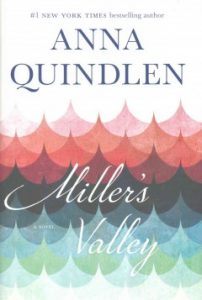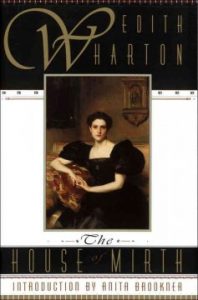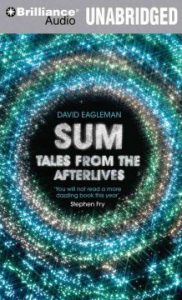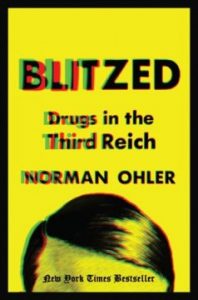
Here at the Peabody Institute Library, we are truly fortunate to have a staff with wonderfully diverse tastes in books, graphic novels, films, audiobooks, and more. And so we are always on-hand to help you find whatever you are looking for when you come into the Library.
It also means that when we at the Free For All ask our staff for their favorite books/films/audiobooks from the past year, the results are fascinating, beautifully varied, and totally engaging. So it is our pleasure today to begin our survey of our staff picks for the “Best of 2017”.
The rules are simple: the media in question doesn’t have to have been created during this year, they just have to be enjoyed this year. As a result, you’ll see books from the nineteenth century and films made released in the past few months, and audiobook adaptations of classic novels, as well as recordings of new thrillers. We hope you enjoy these suggestions, and that you find some books to help usher in the New Year!
Best of 2017
From the West Branch:
 Miller’s Crossing: In a small town on the verge of big change, a young woman unearths deep secrets about her family and unexpected truths about herself in this emotionally powerful story about a family you will never forget. For generations the Millers have lived in Miller’s Valley. As Mimi Miller eavesdrops on her parents and quietly observes the people around her, she discovers more and more about the toxicity of family secrets, the dangers of gossip, the flaws of marriage, the inequalities of friendship and the risks of passion, loyalty, and love. Home, as Mimi begins to realize, can be “a place where it’s just as easy to feel lost as it is to feel content.” Miller’s Valley is a masterly study of family, memory, loss, and, ultimately, discovery, of finding true identity and a new vision of home that The New York Times Book Review called “Overwhelmingly moving . . . In this novel, where so much is about what vanishes, there is also a deep beating heart, of what also stays.”
Miller’s Crossing: In a small town on the verge of big change, a young woman unearths deep secrets about her family and unexpected truths about herself in this emotionally powerful story about a family you will never forget. For generations the Millers have lived in Miller’s Valley. As Mimi Miller eavesdrops on her parents and quietly observes the people around her, she discovers more and more about the toxicity of family secrets, the dangers of gossip, the flaws of marriage, the inequalities of friendship and the risks of passion, loyalty, and love. Home, as Mimi begins to realize, can be “a place where it’s just as easy to feel lost as it is to feel content.” Miller’s Valley is a masterly study of family, memory, loss, and, ultimately, discovery, of finding true identity and a new vision of home that The New York Times Book Review called “Overwhelmingly moving . . . In this novel, where so much is about what vanishes, there is also a deep beating heart, of what also stays.”
From the Main Library, Circulation Desk:
 House of Mirth: Pulitzer Prize-winning American author Edith Wharton used her inside knowledge of upper class New York life in the early part of the 20th century as the basis for her 1905 novel, the blackly-comic tragedy of Lily Bart. who seeks to secure a husband and a place in the society life of New York’s upper class. Lily, who was raised to strive for a socially and economically prosperous marital union, finds herself at the edge of thirty, her youthful beauty fading and her matrimonial prospects dwindling. The novel follows Lily’s descent down the social ladder over a period of two years as she circles the margins of New York’s upper class drawing closer to what seems an inevitable loneliness. Central to the theme of the novel is how the Victorian era offered women relatively few other alternatives to achieve upward social and economic mobility than through marriage. “The heart of the wise is in the house of mourning; but the heart of fools is in the house of mirth,” warns Ecclesiastes 7:4, and so does the novel by Edith Wharton that takes its title from this call to heed.
House of Mirth: Pulitzer Prize-winning American author Edith Wharton used her inside knowledge of upper class New York life in the early part of the 20th century as the basis for her 1905 novel, the blackly-comic tragedy of Lily Bart. who seeks to secure a husband and a place in the society life of New York’s upper class. Lily, who was raised to strive for a socially and economically prosperous marital union, finds herself at the edge of thirty, her youthful beauty fading and her matrimonial prospects dwindling. The novel follows Lily’s descent down the social ladder over a period of two years as she circles the margins of New York’s upper class drawing closer to what seems an inevitable loneliness. Central to the theme of the novel is how the Victorian era offered women relatively few other alternatives to achieve upward social and economic mobility than through marriage. “The heart of the wise is in the house of mourning; but the heart of fools is in the house of mirth,” warns Ecclesiastes 7:4, and so does the novel by Edith Wharton that takes its title from this call to heed.
 Sum: Tales from the Afterlifes: At once funny, wistful and unsettling, Sum is a dazzling exploration of unexpected afterlives—each presented as a vignette that offers a stunning lens through which to see ourselves in the here and now. In one afterlife, you may find that God is the size of a microbe and unaware of your existence. In another version, you work as a background character in other people’s dreams. Or you may find that God is a married couple, or that the universe is running backward, or that you are forced to live out your afterlife with annoying versions of who you could have been. With a probing imagination and deep understanding of the human condition, acclaimed neuroscientist David Eagleman offers wonderfully imagined tales that shine a brilliant light on the here and now. Even better, the narrators of this audiobook (including Stephen Fry, Gillian Anderson, and Emily Blunt) are stellar at conveying the humor, insight, and emotion of Eagleman’s work. You can also check out the book via this link.
Sum: Tales from the Afterlifes: At once funny, wistful and unsettling, Sum is a dazzling exploration of unexpected afterlives—each presented as a vignette that offers a stunning lens through which to see ourselves in the here and now. In one afterlife, you may find that God is the size of a microbe and unaware of your existence. In another version, you work as a background character in other people’s dreams. Or you may find that God is a married couple, or that the universe is running backward, or that you are forced to live out your afterlife with annoying versions of who you could have been. With a probing imagination and deep understanding of the human condition, acclaimed neuroscientist David Eagleman offers wonderfully imagined tales that shine a brilliant light on the here and now. Even better, the narrators of this audiobook (including Stephen Fry, Gillian Anderson, and Emily Blunt) are stellar at conveying the humor, insight, and emotion of Eagleman’s work. You can also check out the book via this link.
From the Main Library, Reference Desk:
 Blitzed: Drugs in the Third Reich: The Nazi regime preached an ideology of physical, mental, and moral purity. But as Norman Ohler reveals in this gripping new history, the Third Reich was saturated with drugs. On the eve of World War II, Germany was a pharmaceutical powerhouse, and companies such as Merck and Bayer cooked up cocaine, opiates, and, most of all, methamphetamines, to be consumed by everyone from factory workers to housewives to millions of German soldiers. In fact, troops regularly took rations of a form of crystal meth—the elevated energy and feelings of invincibility associated with the high even help to explain certain German military victories. Drugs seeped all the way up to the Nazi high command and, especially, to Hitler himself. Over the course of the war, Hitler became increasingly dependent on injections of a cocktail of drugs—including a form of heroin—administered by his personal doctor. While drugs alone cannot explain the Nazis’ toxic racial theories or the events of World War II, Ohler’s investigation makes an overwhelming case that, if drugs are not taken into account, our understanding of the Third Reich is fundamentally incomplete. In addition to being a terrific learning experience, this book is a pleasure to read, which isn’t an easy thing to say about all academic historical works!
Blitzed: Drugs in the Third Reich: The Nazi regime preached an ideology of physical, mental, and moral purity. But as Norman Ohler reveals in this gripping new history, the Third Reich was saturated with drugs. On the eve of World War II, Germany was a pharmaceutical powerhouse, and companies such as Merck and Bayer cooked up cocaine, opiates, and, most of all, methamphetamines, to be consumed by everyone from factory workers to housewives to millions of German soldiers. In fact, troops regularly took rations of a form of crystal meth—the elevated energy and feelings of invincibility associated with the high even help to explain certain German military victories. Drugs seeped all the way up to the Nazi high command and, especially, to Hitler himself. Over the course of the war, Hitler became increasingly dependent on injections of a cocktail of drugs—including a form of heroin—administered by his personal doctor. While drugs alone cannot explain the Nazis’ toxic racial theories or the events of World War II, Ohler’s investigation makes an overwhelming case that, if drugs are not taken into account, our understanding of the Third Reich is fundamentally incomplete. In addition to being a terrific learning experience, this book is a pleasure to read, which isn’t an easy thing to say about all academic historical works!
We’ll see you next week, beloved patrons, with some more recommendations from our Best of 2017 Picks!
